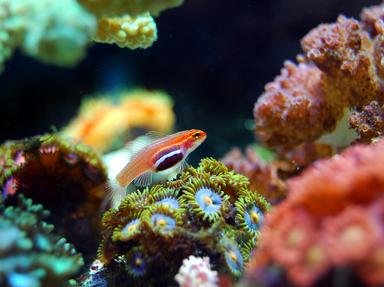Quiz Answer Key and Fun Facts
1. In what oceans are Portuguese man o' wars found?
2. The Portuguese man o' war's sting is venomous, and can kill humans.
3. Which of the following terms best describes a Portuguese man o' war?
4. From where did the Portuguese man o' war receive its name?
5. What does a Portuguese man o' war eat?
6. The tentacles on a Portuguese man o' war help to propel it through the ocean.
7. What gives the "sail" or bladder of the Portuguese man o' war its shape?
8. Which of the following is NOT a predator of the Portuguese man o' war?
9. A severed tentacle from a Portuguese man o' war can still produce a painful sting.
10. The body of the Portuguese man o' war is comprised of four structures. What are these structures called?
Source: Author
ponycargirl
This quiz was reviewed by FunTrivia editor
guitargoddess before going online.
Any errors found in FunTrivia content are routinely corrected through our feedback system.
